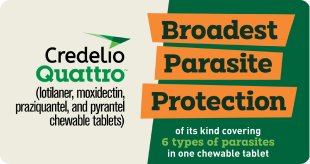Summer may have come to an end, but parasite season is still underway, with fleas and ticks lurking in tall grass, hiding in wooded areas, and crawling in leaf piles. While these bloodsuckers can bug your pets year-round, some species actually peak through October and November, putting your pet’s health at risk. Use these autumn pest control tips to keep these pests from bugging your cat or dog.
Flea Prevention In The Fall
Though your pets may have stayed flea-free all summer, they may be at greater risk for fleas come October. If the temperatures in your region were above 85 degrees Fahrenheit over the summer, it was likely too hot for flea larvae to emerge. Though fleas lay eggs on their host, the eggs tend to fall off, hiding in places like gardens, debris piles, and even in your carpet, waiting for the best time to hatch.
With cooler weather, flea eggs on your property may hatch in large numbers. Flea larvae need moisture to survive, so they love rainy fall weather and the resulting soggy leaf litter. Like a caterpillar, they then form a cocoon, but can take anywhere from 14 days to several months to emerge as adult fleas, ready to feed on your pet.
Flea pupae wait in their cocoon until the next warm day, or until they stick to your pet and end up in your warm house. Even in the winter, your pet can pick up fleas in varied life stages from outside, infesting your home with last season’s pests. That’s why, even when there’s snow on the ground, your pet needs to take their flea and tick preventative.
Tick Prevention In The Fall
Like fleas, ticks thrive in moist leaf litter in the fall. They’ll also continue to lurk at your favorite parks and hiking destinations in tall grass and wooded areas. On chilly days, they tend to emerge in the middle of the day when it’s warm out.
Ticks do not die in the winter, nor do they hibernate. Most species become less active when temperatures dip below freezing and when there’s snow on the ground, but any time it’s warmer than 40 degrees Fahrenheit, they become active again.
What’s more, wildlife like deer, squirrels, and mice are active in the fall. For the deer, it’s mating season. For other animals, fall is the time to harvest nuts and berries to build up their fat stores and bury food caches. You might see more wildlife in your yard, and with them, they tend to bring fleas and ticks.
Autumn Parasite Control For Cats and Dogs
All year, including in the fall, continue to treat your pet with a flea and tick preventive like Advantix or Frontline. Don’t forget to give them their heartworm preventative as well, as mosquitoes will continue to be active when it’s over 50 degrees out. Simparica Trio for dogs tackles fleas, ticks, and heartworm as well as roundworms and hookworms.
Even indoor cats need protection, as your other pests can find their way into your home by the way of other pets or by clinging to your clothing when you’re outside. Revolution Plus for cats protects against fleas, ticks, and internal parasites.
Pets mainly pick up pests from their environment. Pests thrive in tall, unmowed grass because it protects them from the sun. They love leaf piles, standing water, and wood piles. Keeping your property clear of places where pests lurk will help keep their numbers low.
If possible, remove woodpiles, or make sure they’re placed far from your home and where your pets go outside. You can use mulch or gravel to create a pest-free border between wooded areas and your yard. As needed, treat your property with an outdoor treatment like Sentry Yard & Premise Spray.










































